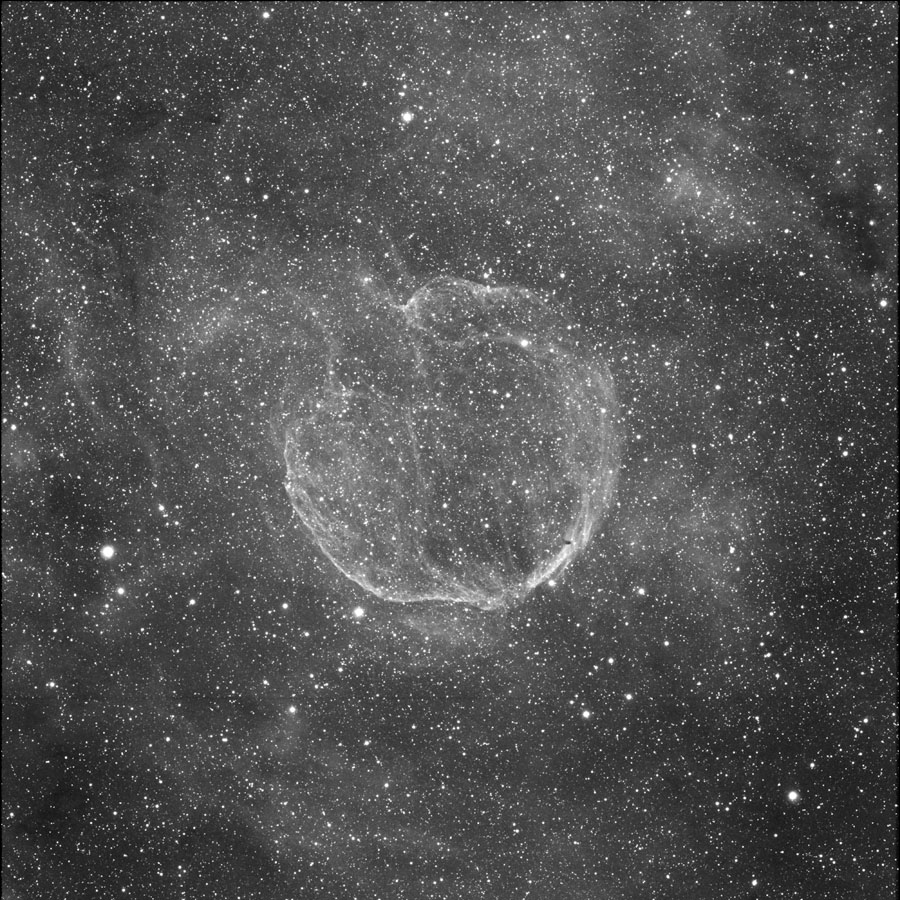© James Janusz 2000 thru 2008 All Rights Reserved |
| Telescope: Astro-Physics 180mm EDF f7 |
Designation: Super Nova Remnant CTB-1 (Abell 85) |
| Mount: Astro-Physics AP1200 GTO |
Constellation: Cassiopia |
| Camera: Apogee U16-M with Astrodon Filters |
Remotely Imaged with CCDCommander |
| Guiding: Custom Off Axis Guider/ ST402 |
Type: Super Nova Remnant (SNR) |
| Exposure: Ha 11 hours |
Position: R.A. 23 hr 59 min , Dec +62 260 05' |
| Processed using Maxim, PhotoShop CS2 |
Date: October 2008 |
| Acquisition: Maxim/The Sky 6/CCDCommander |
Location: Cave Creek Canyon Observatory |

This information is from the Web at
http://www.astronomy-mall.com/Adventures.In.Deep.Space/ultimate.htm
Abell 85 (CTB 1) is a large supernova remnant (SNR) located in Cassiopeia.
Originally catalogued by George Abell as a planetary nebula, it soon became evident that it was actually a SNR.
It was also recognized as a radio source and acquired the alternative designation CTB 1.
According to Brian Skiff, Abell 85 has relatively weak [O III] and H-Beta emission compared to the "traditional"
supernova-remnant lines of H-alpha, [NII], and [SII]. For visual observers, the gain in contrast using [O III]
and H-Beta filters appears to be minimal. Likewise, the digital sky survey reveals only a low-surface brightness
object on the red POSS-1 image, while it was invisible on the blue light image. Skiff suggested that the SNR may not be a visual object.
Shortly after Skiff's informative posting on sci.astro.amateur, two German observers published an extensive
catalogue on galactic nebulae in the January 1996 issue of the Webb Society Quarterly Journal.
Andreas Alzner and Ronald Stoyan observed the nebula at 70x using a 50cm (20-inch) telescope
equipped with an O III filter. Though listed as "very faint", their success clears the way for more observations
by serious amateurs. For those seeking a difficult challenge, here are a few important statistics:
Center of Abell 85: 23hr 59m +62.5 (2000)
Diameter: 35'
Brightest Segment: 23hr 57.5' to 00 00.5 at 62.2 Dec (2000)
These numbers were originally posted by Brian Skiff on sci.astro.amateur.
Good comparison photos can be found in van den Bergh et al. 1973 (ApJSuppl 26, 19)
and on page 55 of the Sky and Telescope 1971 monograph The Planetary Nebulae by Lawrence Aller.
|


